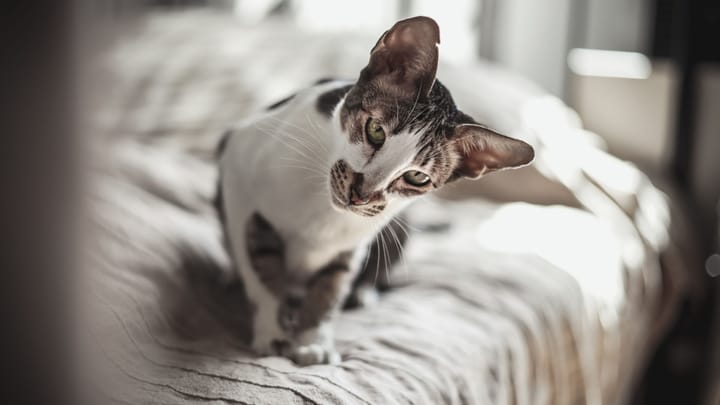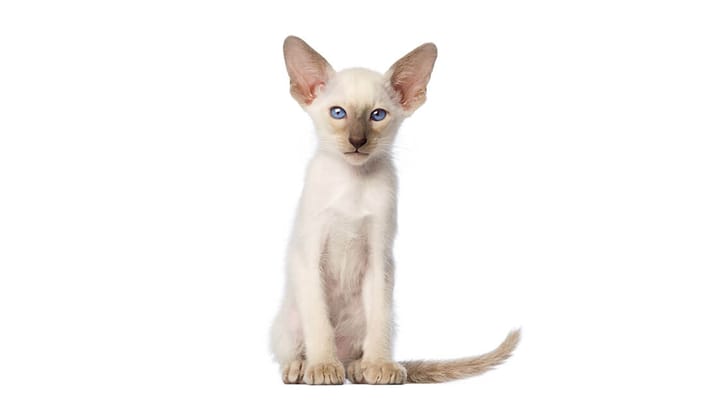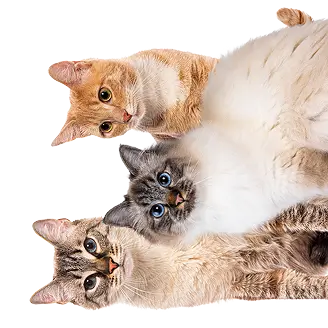Oriental
Other names : Oriental Shorthair, Oriental Longhair, Mandarin


What to say about this perfect silhouette? This filiform cat is so graceful that you cannot ignore them. They are slender and really stylish. With such elegance, both in their movements and their attitude, you can only appreciate them. They have long been seen as a non-conforming Siamese and have therefore been denigrated by breeders. However, they form a distinct breed, define among other things by their eyes which are not blue, but also by the absence of well-defined marks like darker extremities. This cat is purely and simply a delight for the eyes.
|
Life expectancy |
The Oriental has a life expectancy of between 10 and 20 years |
|
Temperament |
|
|
Adult size |
Female
Approximately 12 in
Male
Approximately 12 in
|
|
Adult weight |
Female
Between 4 and 11 lb
Male
Between 7 and 13 lb
|
|
Coat colour
Black / seal, blue / grey-slate, chocolate, lilac / lilac, cinnamon / cinnamon, fawn, red, white, cream, silver, gold, smokey, shaded / chinchilla |
Black Brown White Red Cream Blue |
|
Type of coat
Two varieties exist, one with short hair and one with long hair (known as javanese or mandarin) |
Short Long |
|
Eye colour
As intense a green as possible, blue, dichroic eyes are accepted in white Orientals. |
Blue
Green
Odd-eyed
|
|
Purchase price |
The Oriental costs approximately 300£ |
Did you know that Havana Brown descends from the Oriental? Their brown coat is one of the colours that appeared after many crosses made in the fifties. The Havana entered the United States earlier than their cousin and evolved to become a full-fledged breed later.
More details about the Oriental
Oriental: Origins and history
The Oriental appeared in England in the fifties. After the Second World War, some breeders were very creative and made crosses between the Siamese and several breeds (such as the Russian Blue and the Abyssinian). The offspring from these crossings were again crossed with Siamese and, after only a few generations, the only way to distinguish the Oriental from the Siamese was by their colour. Many colours made their appearance and at first, the breeders attributed breed names to each different coloured cat. Obviously, the breeders quickly realised that there were too many different colours to make each a distinct breed. Thus was born the Oriental race of which 2 varieties were identified: the "Shorthair" and the "Longhair". The breed was then exported to the United States in 1970. New crossovers were made between American Shorthairs and Siamese, which gave birth to an even wider variety of colours.
Physical characteristics of the Oriental
The Oriental is thin and slender, but is also muscular and very athletic.
Oriental: Characteristics
Oriental: Behaviour
Breed compatibility Oriental
Oriental: Purchase price
On average, the price of an Oriental kitten is approximately £300, the price often varies according to the lineage, the breeder, the age or even the sex, but also according to the length of the hair (the Javanese or Mandarin is not the same price as the Oriental Shorthair). For the monthly budget, it will cost on average £35 / month to support the needs of this cat, by offering a quality diet and ensuring their good health.
Oriental: Shedding
Light
Both varieties (short and mid-length hair) lose very little hair. It should be noted, however, that when moulting, hair loss will be greater and more frequent brushing may be necessary.
Oriental: Grooming
This breed requires minimal maintenance. For both varieties, a weekly brushing will be sufficient. For the long-haired variety, a comb is the tool of choice.
Oriental: Health
Life expectancy is 10 to 20 years with the average being around 15.
Whether short-haired or long-haired, this cat does not cope well in cold temperatures. The lack of undercoat in the long-haired variety explains why this cat gets chilly.
In general, this cat eliminates the calories ingested without problem since they are very active. Your vet can calculate the portions of food to be served each day so that your cat maintains a healthy weight.
Orientals is predisposed to the same diseases as their cousins:
- Progressive atrophy of the retina: a hereditary disease that causes blindness in the short to medium term. In some cases, the disease can appear late in the cat's life, giving them the opportunity to adapt to this condition gradually. Unfortunately, when it appears at a very young age the kitten quickly becomes blind and has little time to get used to it.
- Renal Amyloidosis: Hereditary also, this disease is fortunately quite rare, but the outcome is always fatal. Progression is rapid when the disease occurs and symptoms usually begin between the ages of 1 and 5 years. They look a lot like the symptoms of kidney failure. No screening test is currently available because the genetics that cause the disease are unclear
- Some individuals may suffer from the same diseases as other domestic cats, such as oral diseases.
Breeding is authorised with the Siamese, the Balinese (long-haired Siamese) and the Javanese.







